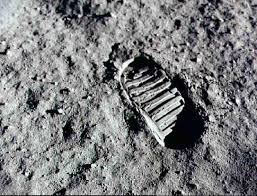
Many people think that our moon is made out of cheese. From a scientific standpoint, that is definitely false. There are many striking things we can see from earth when looking at the moon. Look at this picture, what can you see?
- Large dark spots;
- Mainly white colored
The large dark spots are called Maria. Early scientists thought the spots were lunar seas and maria is Latin for sea. These spots are iron-rich in composition as compared to the lighter areas of the moon (silicate-rich).
Another striking thing is lunar temperature. During the day when insolation from the sun is at the greatest, the temperature of the lit side of the moon can get as high as 240°C and on the other side of the moon can get as low as -240°C. The extremely low temperature is due to the lack of the sun's radiation.






No comments:
Post a Comment